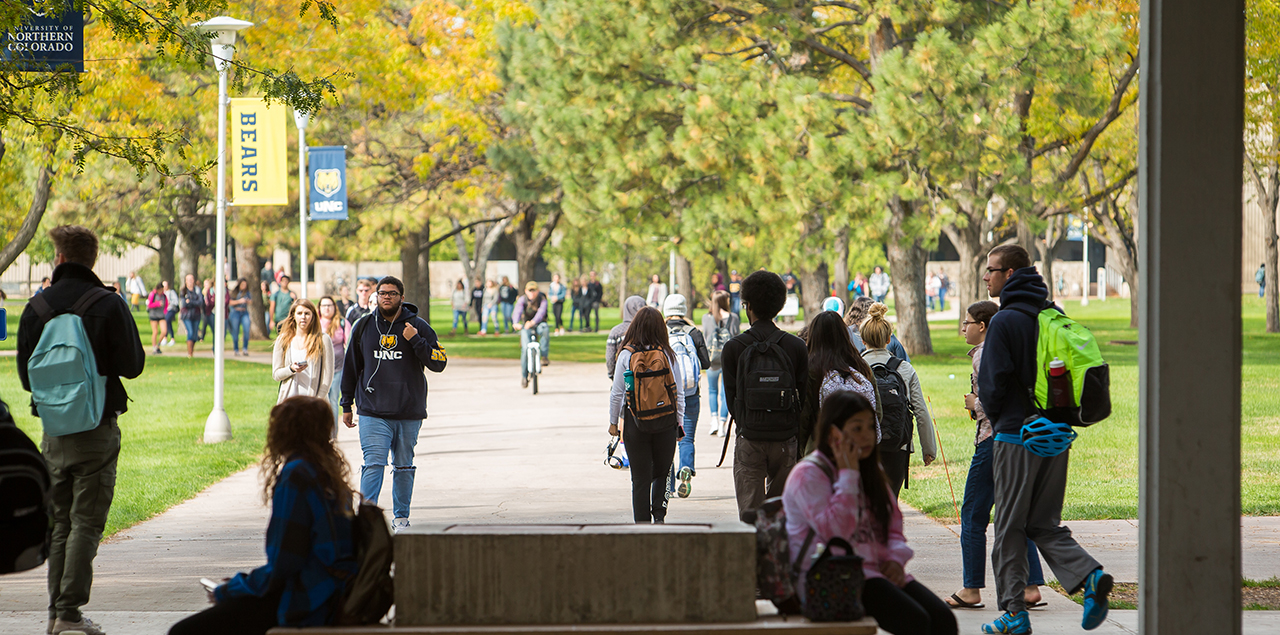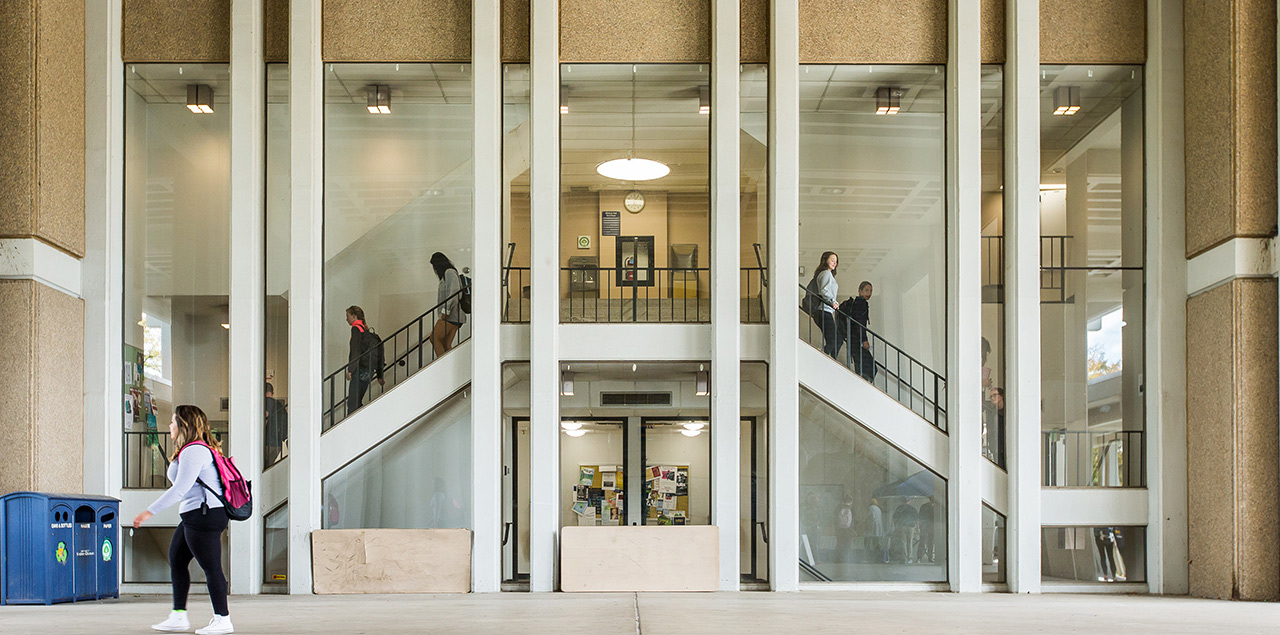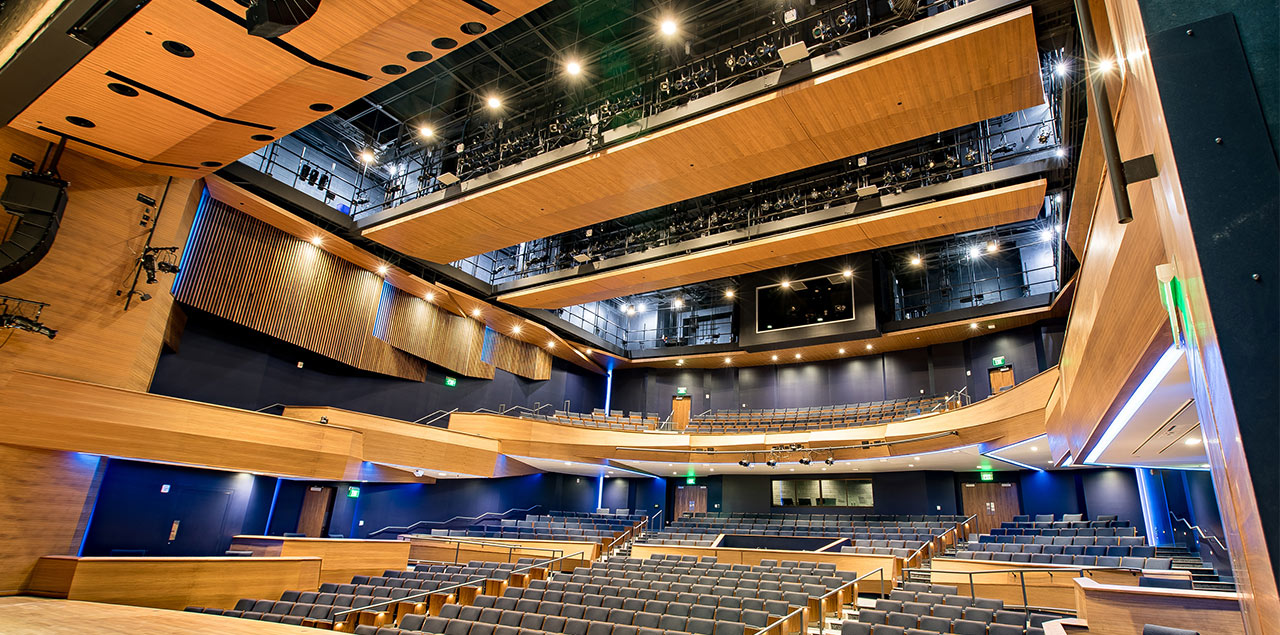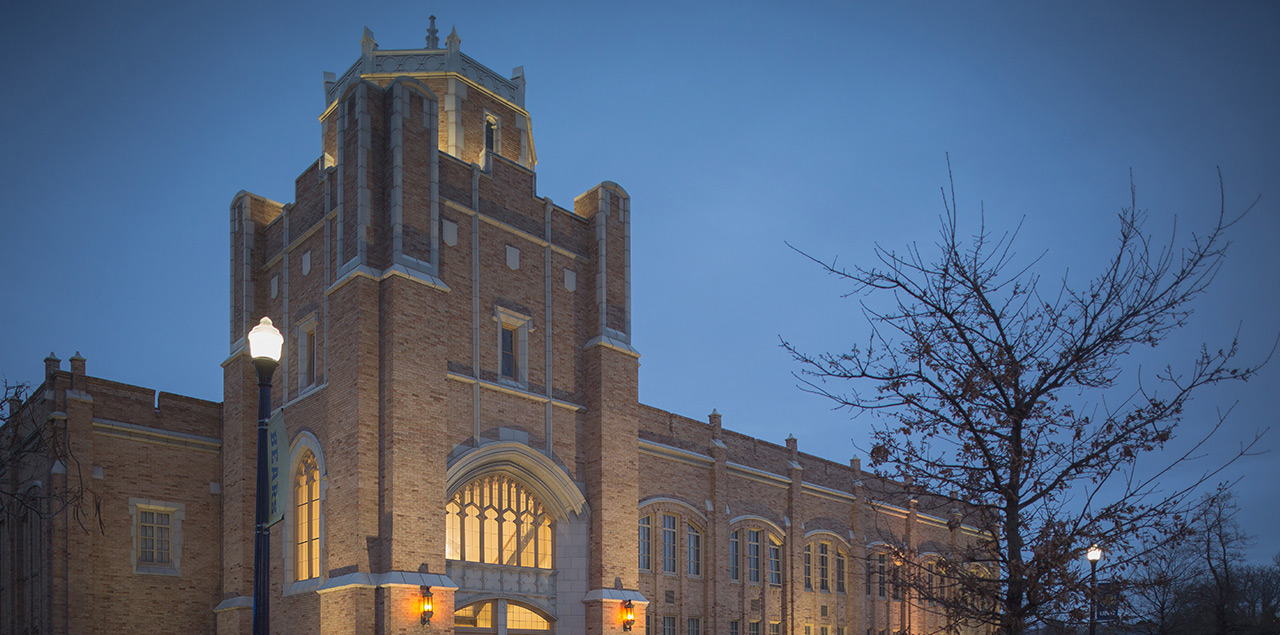
An increase in the number of new, first-time undergraduate and graduate students and record-setting retention and persistence rates highlight the start of the new academic year according to fall census numbers released by the University of Northern Colorado (UNC) on Sept. 10.
The university is reporting a total degree- and non-degree-seeking student population of 8,561 this fall that includes 6,242 undergraduate and 2,319 graduate students. From census to census, UNC saw a 1.7% increase this year over the previous fall; the first increase in total enrollment since 2017.
“Through a collaborative cross-divisional effort between Student Affairs and Academic Affairs, we have applied many intentional and innovative efforts over the past two years to stop and reverse what has been a declining trend in enrollment for the university,” said Pete Lien, associate vice president of Enrollment Management. “This has been and will continue to be a lot of hard work, but we’re starting to see some positive momentum that is really exciting.”
Accessibility, Affordability and Forging Connections Lead New Student Growth
This year’s class includes 1,289 new, first-time undergraduate students. That number is not only up 5% from last fall, but it’s also the first time the university has seen a back-to-back increase in its new, first-time student population since fall 2016. The university also saw significant growth in the number of new graduate students with 771 entering this fall, an increase of 7.2% over last year.
The greatest growth in the new undergraduate population came from high schools in Larimer (+20%), Denver (+28%), Boulder (+42%) and Jefferson counties (+40%).
Growth also came from key demographics of underrepresented populations, many of which are at their highest since at least 2020. This includes a 12% increase in the number of underrepresented minorities (39%), a 30% increase in the number of Pell-eligible students (41%) and a 5% increase in the number of first-generation students (44%). The number of new, first-time undergraduate Hispanic/Latine-identifying students was also up to 28.5%, the highest in the past five years, bringing the projected overall Hispanic/Latine-identifying student population for the university to 27%, an increase of 1% over last year.
Lien said the increases in these particular groups are a testament to the university’s successful efforts to prioritize affordability and accessibility for all students through multiple levels. This includes the university’s First-Year Admission Guarantee which was launched last fall. The initiative provides clarity about UNC’s admission standards and guarantees admission to the university for eligible Colorado high school students.
“Making sure that students can see a college degree as an obtainable option is the first step to making it accessible to them,” said Lien. “Ensuring that the admission process is seamless and easy to access is important and that’s where our First-Year Admission Guarantee is helping.”
Lien also acknowledged the successful efforts behind the university’s Adelante and Cafecito community events. Held at different locations throughout the state, the events offer a more personal approach in providing Hispanic and Latine-identifying high school students and their families with helpful information about navigating the college process.
RELATED: ¡Adelante! Helps Local Students Find Path to College
As a Hispanic Serving Institution, Lien said the events align with the university’s goals to ensure that institutional programing meets the needs of students and families where they are, both culturally and geographically. He said the lessons they are learning in their new approach are benefiting students from all populations.
“We’ve leaned into the role of educators in our Admissions office,” said Lien. “We want to be experts in educating all students and families about the value of UNC and higher education in general. Regardless of whether students come here, we want to make sure they are aware of their options and can see themselves at an institution like UNC. If we do that well for the students who traditionally face more barriers to accessing higher education, we can use that model to be more helpful to every student.”
That commitment to making personal connections with prospective students has become common practice across the university. Kirsten Fleming, provost and executive vice president for Academic Affairs, gives further credit for the increase in enrollment to the efforts of faculty and staff who are out visiting high schools, hosting on-campus experiences for prospective students and reaching out to admitted students to answer questions and provide information.
The UNC Tuition Promise, launched last January, also opened a new door to affordability, covering standard tuition and mandatory fees to eligible incoming and continuing undergraduate Colorado students. Lien said the program was not only important in attracting new students, but was likely a contributing factor to the university’s record-setting persistence and retention rates.
Record-Setting Retention and Persistence Lead to Student Success
“Our ultimate goal is to get students to graduate in a timely manner with as minimal debt as possible,” said Lien. “While it’s important to get new students to enroll, it’s even more important to ensure they retain and persist to graduation,” said Lien.
This year's class set UNC’s highest fall-to-fall retention rate on record at 75.8%, up from 74.5% last year and a previous high of 75.2%. Retention is a measurement of the number of new, first-time, full-time, degree-seeking students who return to the university from one fall to the next.
The fall class also has the highest fall-to-fall persistence rate for all degree-seeking undergraduate students since at least fall 2009 at 85.3%. Persistence is a measurement of the number of all degree-seeking undergraduate students who returned from one fall to the next or who graduate with a degree.
“When we launched our Tuition Promise, it was applied to all students, so there was extra incentive for eligible continuing students to continue with their degree,” said Lien. “But I think even more importantly, our success in retention and persistence is coming from intentional efforts across the university.”
Lien said that student persistence is continuously held at the forefront of university conversations and threaded through the institution’s strategic enrollment management work. It’s also the focus of increased collaborations across colleges and departments such as Bear Central, Student Affairs and Academic Affairs to ensure students are supported financially, socially and academically.
— This story was updated on Sept. 13, at 3 p.m., to correct minor changes in the retention rate (from 76.1% to 75.8%), and persistence rate (from 85.6% to 85.3%) that occurred due to a reporting error. Both of the fall 2024 rates remain the highest on record. Percentages representing the increases in underrepresented minorities, Pell-eligible and first-generation students were also adjusted. The initial percentages reported should have been percentage point increases, not the percent increase of students in those populations. The adjusted numbers now correctly portray the increase in the percent of each student population over the previous year.





